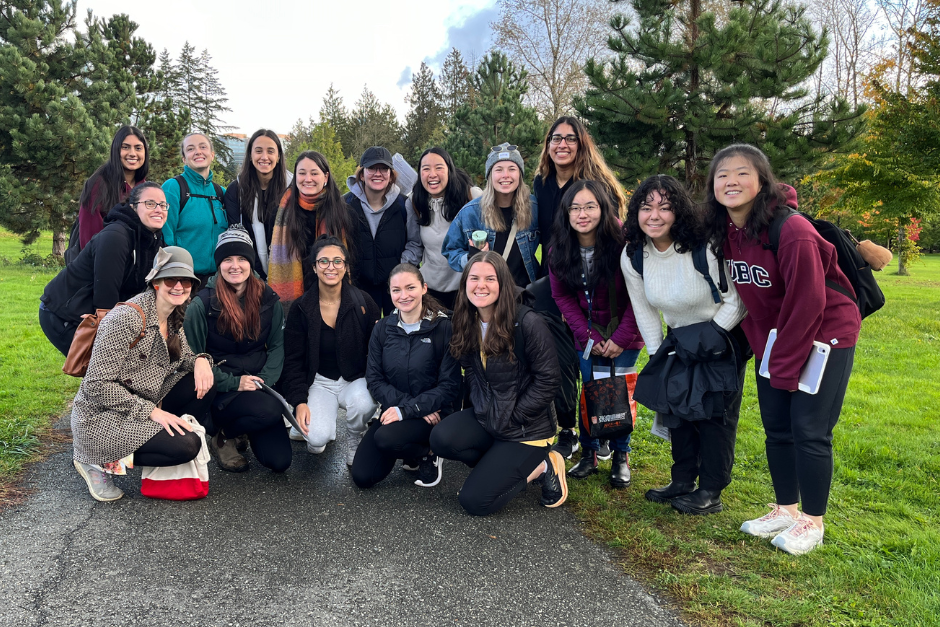
The Kawa model in occupational therapy is rooted in traditional Japanese epistemology and uses the metaphor of a river to represent our lives and well-being. The Kawa model emphasizes the interconnectedness between the self and the environment, and the harmonization between the two can improve well-being. Occupational therapists often use the Kawa model as a culturally-flexible tool to understand the backgrounds and needs of clients.
In our MOT programs, the Kawa model and the lessons it can teach us about ourselves and our learning has expanded across all three of our locations in Vancouver, Prince George and Surrey. By incorporating the traditional physical learning environment and implementing the Kawa model in nature, each location offers unique traits that support instruction and learning.
In Vancouver, OSOT 511 took their class outdoors to the Nitobe Memorial Garden and the surrounding forest, on the ancestral, unceded and traditional lands of the xʷməθkʷəy̓əm (Musqueam) First Nation. By discussing the Kawa model in the outdoors, instructors engage in a pedagogical practice that supports students’ well-being and sense of community and enhances their learning through fostering deeper learning (see “Taking Learning Outdoors in Nature”). Students and instructors alike are deeply grateful to the generosity of the Nitobe Memorial Garden’s curator, Ryo Sugiyama, and the garden’s staff as they welcome us back year after year and the xʷməθkʷəy̓əm First Nation.


The Prince George cohort took class outside to think about the Kawa model and apply it within their natural surroundings. The class visited an area of Prince George called Cottonwood Island Nature Park, an area where the Nechako and Fraser Rivers come together. The local First Nations people call this place “Lheitili,” and it is a special place with rich history. It was a wonderful opportunity to learn about the Kawa model in a Northern context as a place-based learning activity, fitting into the emphasis on context and fluidity of the Kawa model.


The Surrey cohort simultaneously engages in occupational therapy models and place-based learning via the Kawa model, using local natural places as a medium for learning. By engaging in both nature and theory together, the Kawa model becomes more real and relatable for students looking to reflect on the interconnectedness between the self and the environment.

In all three of our MOT cohorts, the Kawa model has taught every student valuable aspects of client and personal well-being, showing the interplay between the environment and the self.